Early Roads in Montecito
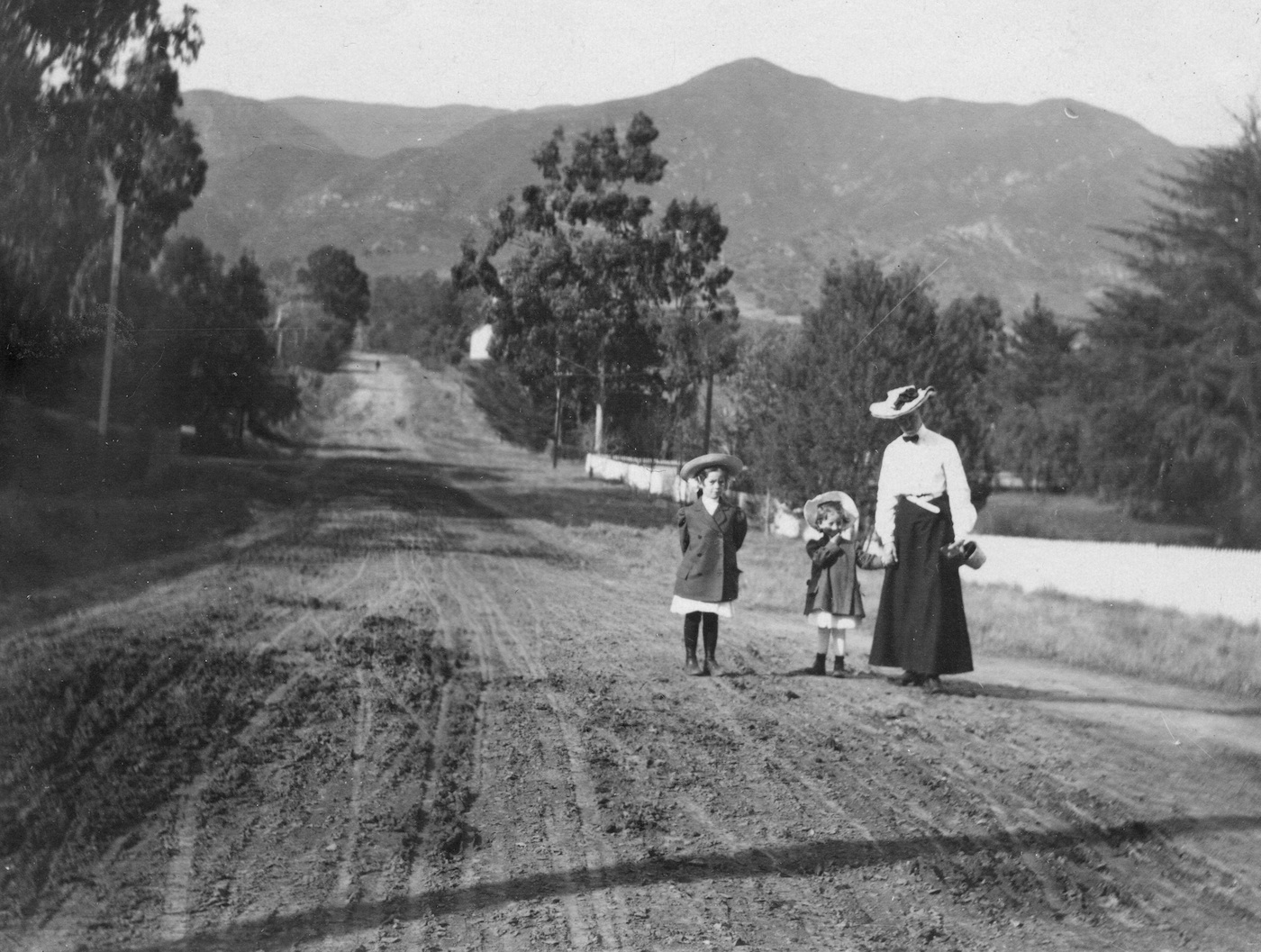
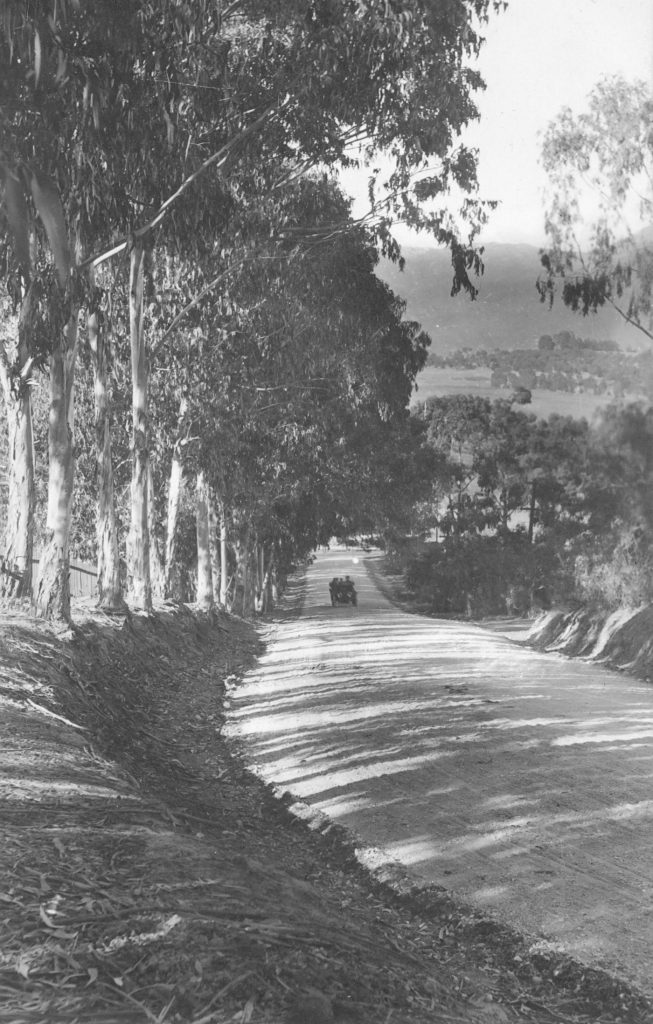
In December 1870, a traveler from Santa Barbara rented a horse and buggy and attempted to visit Colonel Bradbury True Dinsmore at his ranch in El Montecito, stopping first at the famous big grapevine. So frustrating was this experience, he was moved to write of his travails in the local paper. Although he considered the road to la parra grande a disgrace to the civilized community, farther on it was worse since there were no real roads at all! From the grapevine he could see the adobe house in which the Dinsmores lived, but to get there required entering a labyrinth worthy of Daedalus.
Boulders and fences blocked his progress at every turn, and promising tracks that lured him along several twisting routes ended abruptly, forcing him to about-face and find another. Finally reaching the Colonel’s ranch (today’s San Ysidro Ranch), he inquired how he was to return to town, but the Colonel replied that he would never remember the complicated directions, saying it was best if he just kept heading toward the beach, and he’d eventually find a pathway to the County Road.
In the following years, road improvements were gradually made by the County and area residents themselves. As subdivisions arose, streets were platted and designated. In 1887, the Montecito Land Company, formed by Albert E. Touzalin, an associate of John Murray Forbes of the Chicago, Burlington & Quincy Railroad Company, developed one of the first subdivisions on lands Forbes had sold him. Hot Springs Road, which defined the western and northern boundaries of the tract, was officially platted, designated and recorded by the Company at this time. The streets of the subdivision curved organically with Middle Road bisecting the section of the tract north of the County Road (today’s Coast Village Road.) Oak, Summit, and High roads retain their original names, but Montecito Avenue is now Butterfly Lane; and, Bluff Road, which was to continue east and north, is now Oriole Road.
South of the County Road, the Montecito Land Company laid out nearly 400 lots accessed by 10 roads, most of which have either disappeared or had name changes. The two exceptions are Hill Road and Channel Drive. The part of Channel Drive that passes by the cemetery was originally called Animas Road which probably translates best as Souls Road, a fitting tribute to the adjacent residents.
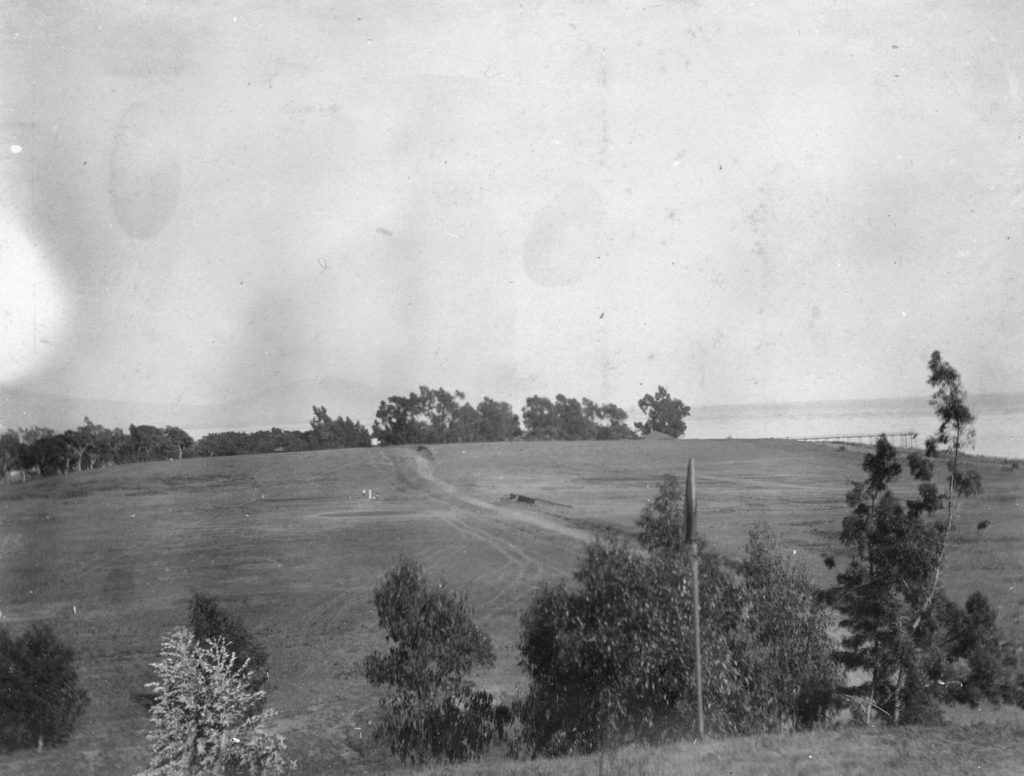
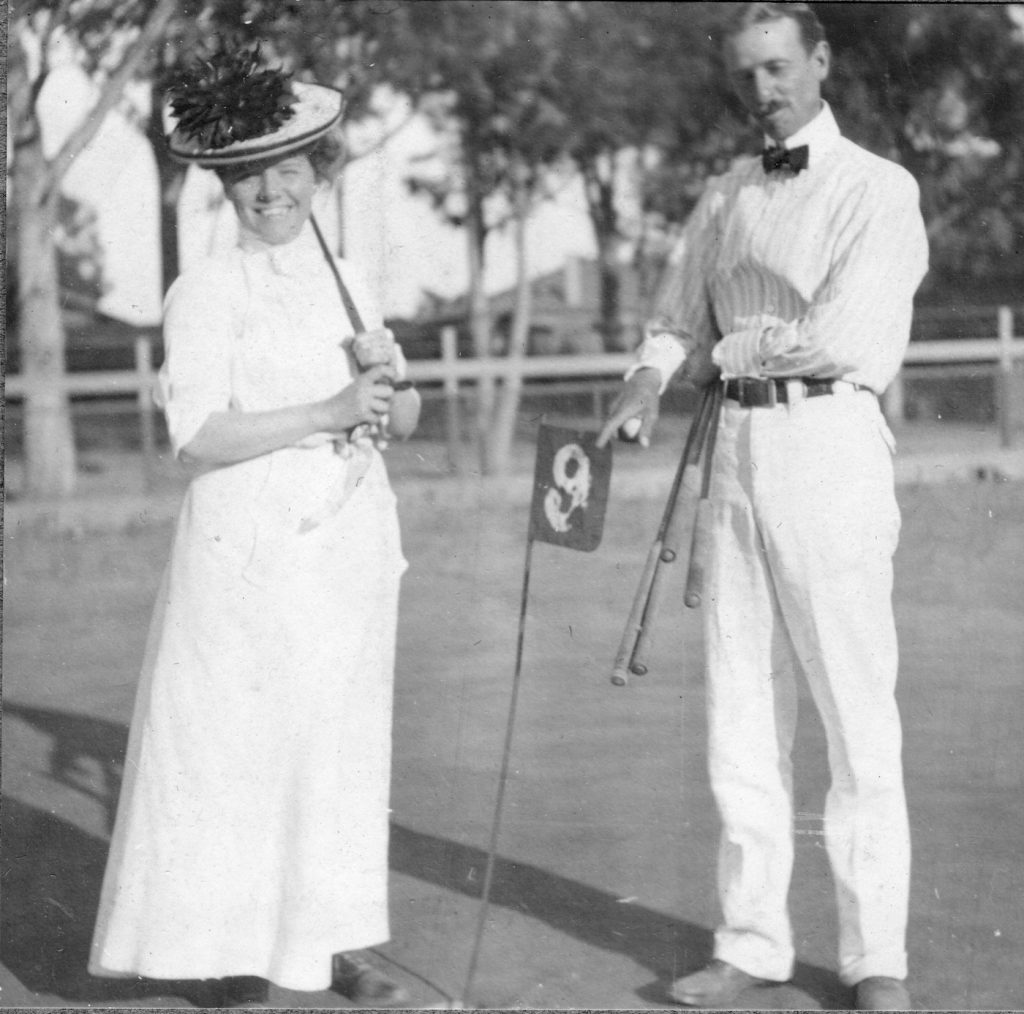
Rural Mail Service and the Naming of Roads
Before 1899, most of the roads in Montecito were nameless, but when Montecito won the bid to become the first RFD service in Southern California, it became necessary to name and sign the streets. No longer would Montecitans need to travel to the nearest post office to pick up their mail. The postal service, however, may have pledged to deliver mail through rain and sleet and snow, but it did not promise to deliver mail through the labyrinth of Montecito’s roads. So, a committee formed and published a list of names to be placed on “attractively lettered signs.” Of course, the response was not completely favorable, in fact, some people were downright incensed.
In their enthusiasm to create names, the committee planned to give some of the well-established main roads a series of new names. East Valley Road, for instance, was to be named Camino Español, Calle Ave Maria, and Forest Road. San Ysidro Road was to be broken into Camino de la Piedra and Orange Grove Road. It seemed that instead of simplifying the maze of roadways, the committee was adding to the confusion!
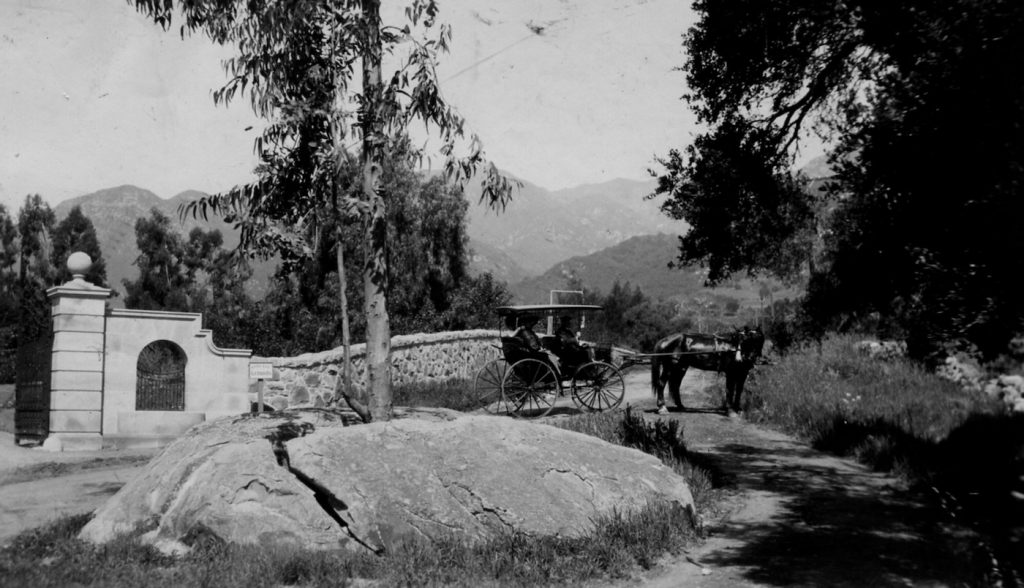
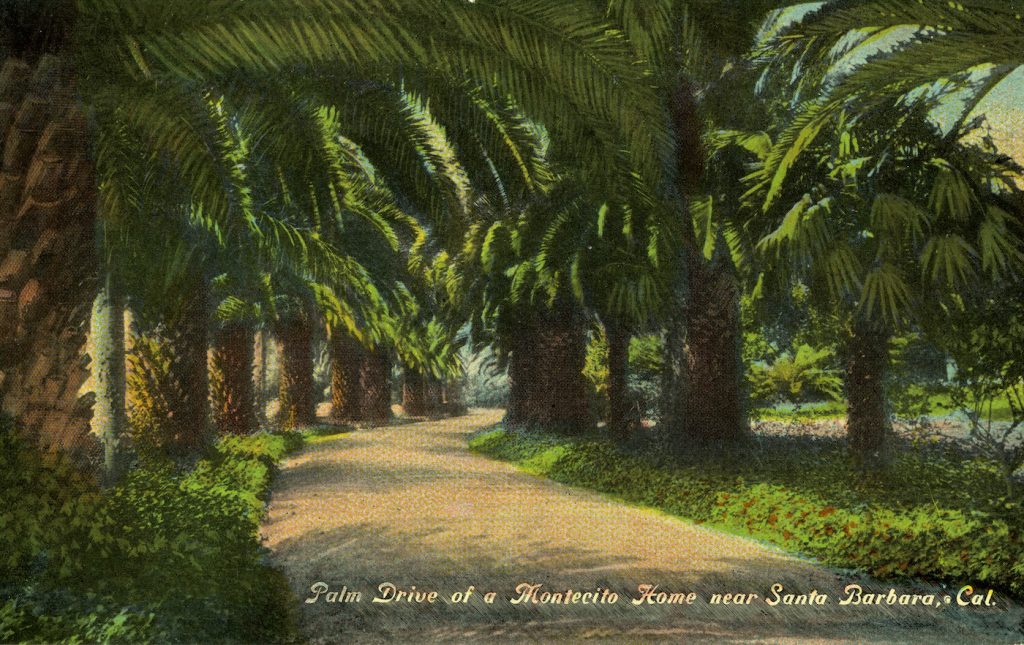
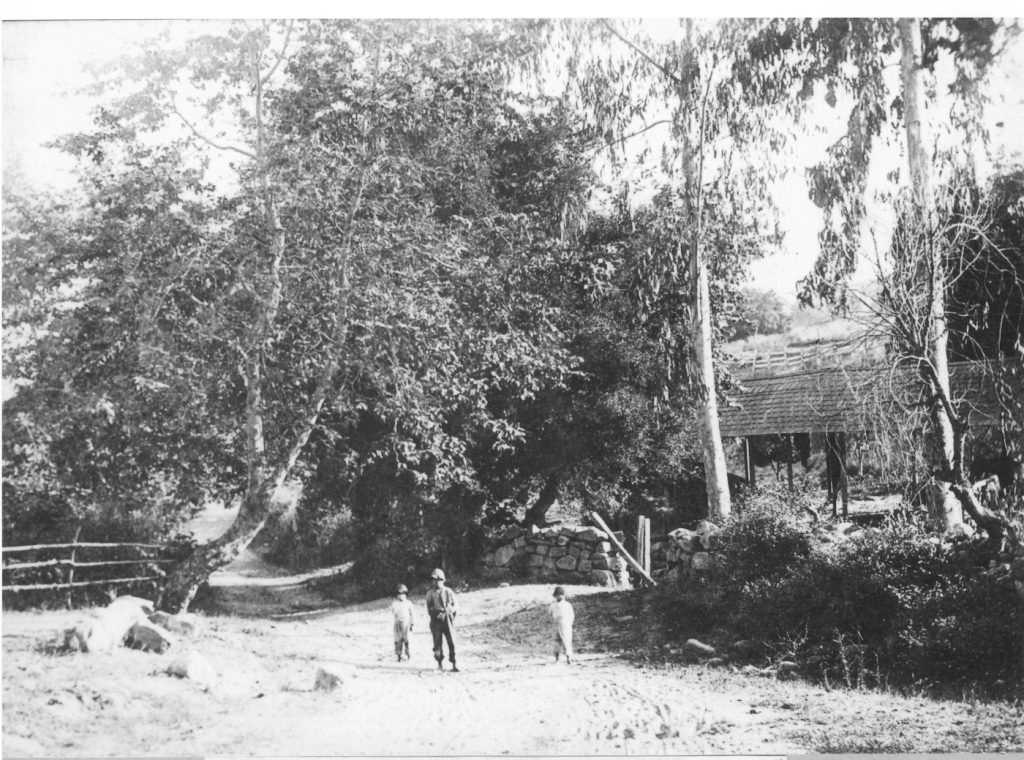
Some residents, perhaps still feeling the patriotic fervor of that “Splendid Little War” with Spain, objected to additional Spanish names. Others, possessed by the romantic and historic ambiance of El Montecito, insisted on promulgating the cause for euphonic beauty through Latinate monikers. One local wag, upon reading the proposed list, sought to add to the fun by suggesting that the part of the road near the cemetery should be called Camino de Todos Santos and the road past the home of Don Feliciano Dominguez, the owner of multiple taverns, be dubbed La Calle de Cuatro Cantinas. As for Olive Mill Road, it was such a plain sounding name that El Camino de Molino de Aceite de Olivos would be much better.
The list continued to be refined, and by May 21, 1899, there were 25 proposed names that, with a few exceptions, are the same as those we use today. The Montecito roads whose names were confirmed or given in 1899 are as follows: Coast Highway (now Coast Village Road), Hot Springs Avenue, East Valley Road, West Valley Road (southern section of Sycamore Canyon Road), Blue Gum Lane (Eucalyptus Lane), Ashley Way, San Ysidro Road, Mountain Drive, Sycamore Canyon Road, Eucalyptus Hill Road, Riven Rock Road, Parra Grande Lane, Olive Mill Road, Romero Road, Toro Canyon Road, La Ladera Lane, Picacho Road, Pepper Lane, School House Lane, Cota Lane, Buena Vista Road, San Leandro Lane, Painted Rock Road (Cold Spring Road, a name which replaced Palm Avenue), Cold Spring Trail (Ayala Road), and Park Way.
Euphonic Spanish Names
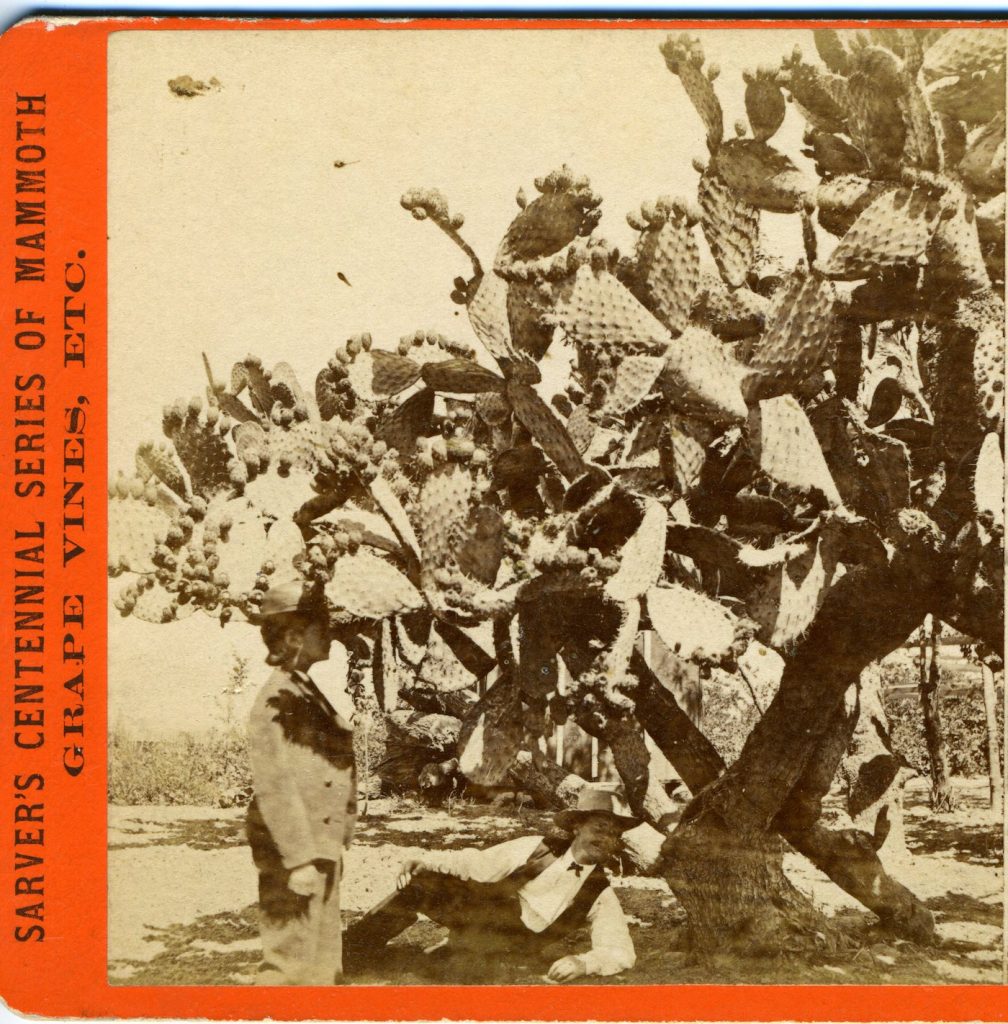
As subdivisions proliferated in Montecito, roads were added and many were given Spanish names, presumably based on some geographic, botanic, geologic or historic feature. Cima Linda, for instance, means beautiful hilltop. It was an appropriate name for a street on the estate created by C.K.G. Billings, one of the five so-called Hilltop Barons. Fuera Lane is an “L” shaped road that connects to El Bosque Road (the woods) and Las Tunas Road (prickly pear cactus). It means “apart from” which the road certainly is. Said as “Fuera!” it means “Get out of here!” Perhaps a better street to visit would be Dulzura, which means sweetness and delight.
Hermosillo, which means somewhat handsome, is also a slang expression for a dandy or a fop. As such, it conjures up images of those dissolute 18th century courtiers in powdered wigs, high-heeled shoes, velvet breeches and white stockings in frockcoats. It’s doubtful that was the intention, however, as the word is clearly mellifluous and the street is very pretty, just brief. Another street name with multiple meanings is Bolero. It can refer to an Andalusian dance, or mean a prevaricating liar or a shoeshiner – take your pick. Vereda means path or lane but can also mean the true path. Obviously the people living on Vereda Lane are upstanding citizens of strong moral fiber. Pimiento means chili pepper but also has a slang association that translates roughly as “Couldn’t care less.” La Vuelta means “the return” and describes itself most accurately, since it starts and ends on North Jameson Lane.
The Saints of Montecito
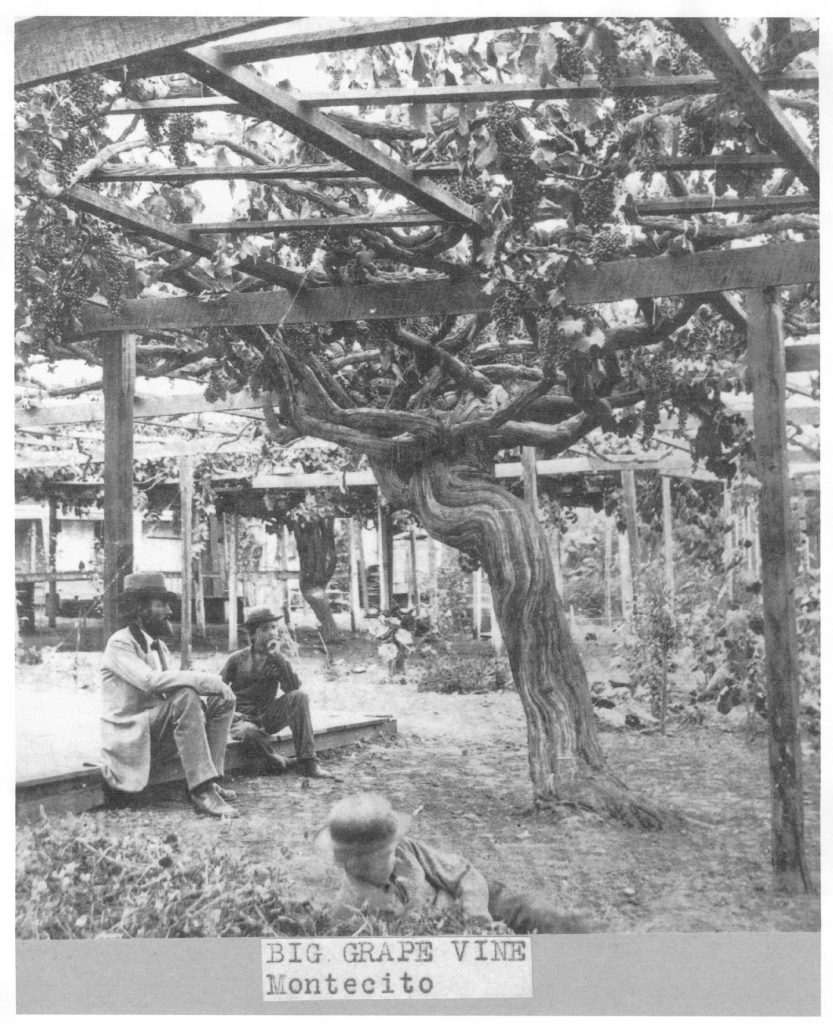
In 1899, two of Montecito’s streets were named for saints. San Ysidro Road was so named because it led to the San Ysidro Ranch with a creek of the same name. San Ysidro is the patron saint of farmers and laborers as he was known for his piety toward the poor and animals. The name doesn’t quite fit with the exclusive resort the ranch became.
San Leandro Lane is named after the early ranch of the same name. San Leandro was the Catholic Bishop of Sevilla who was beatified for his zeal and work toward converting the people of Spain to Catholicism. The 356-acre ranch was originally owned by Neomicio Dominguez, one of 15 children of Jose and Marcelina Dominguez, who owned the famous grapevine after which Parra Grande Road is named. The ranch, whose adobe house is believed to date back to 1835 or 1836, was sold to the Jarvis Swift family in 1868.
Santa Rosa Lane existed early on but wasn’t officially a street until the 1920s. It is named for the first American saint to be canonized. Her sainthood dates to 1671 and she is the patron saint of Lima, Peru. She is considered by many to be a patron of nurses and policemen, as well as embroiderers and gardeners.
The tract of land north of the coast highway and east of Olive Mill Road (named for an olive mill established by William P. Gould in 1892) was subdivided circa 1960. The developer chose to name several of the streets after saints. Unfortunately, neither San Benito, Santa Clara, Santo Tomas, Santa Elena nor Santa Isabella were able prevent the terrifying debris flow that swept through the area in 2018 and laid waste to many of the homes. Reconstruction and restoration continue to this day with many of the homes emerging triumphantly and beautifully into 2019.
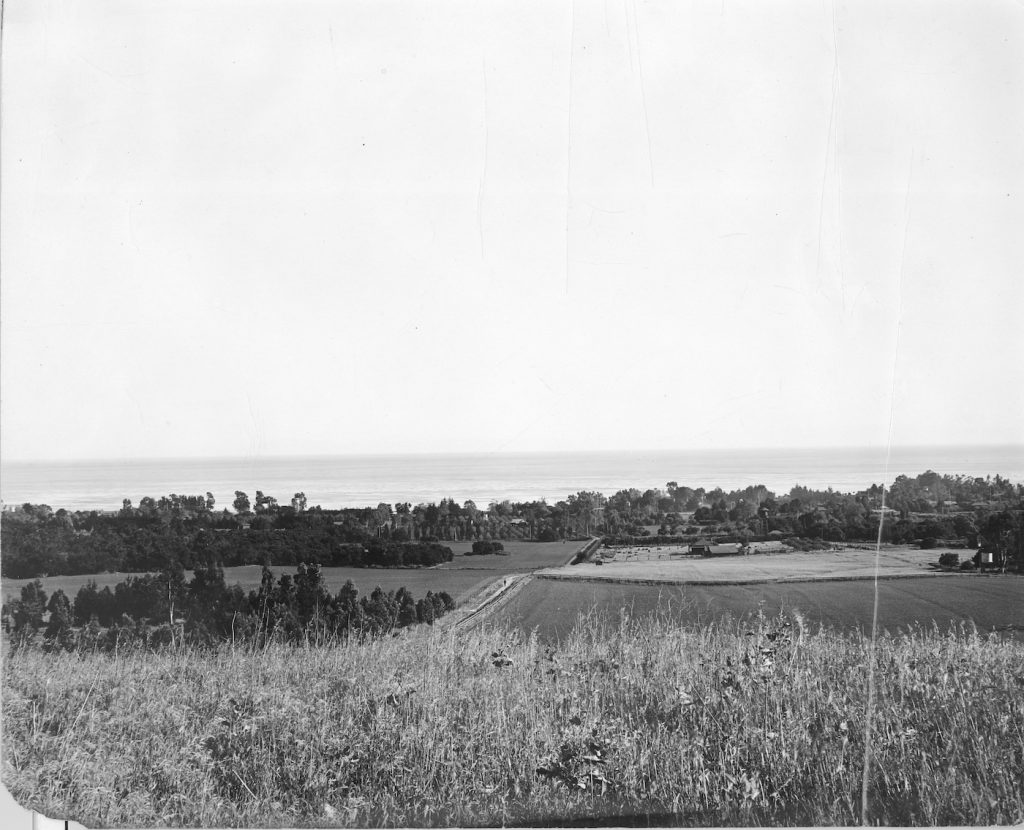
Next Time: Roads named for some of Montecito’s pioneers.
(Sources: the files of the Montecito Association History Committee; various English-Spanish dictionaries; various Catholic sites on the internet, contemporary newspapers, David Myrick’s Montecito and Santa Barbara.)







You must be logged in to post a comment.